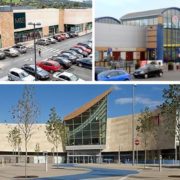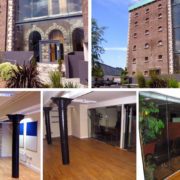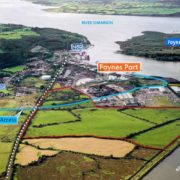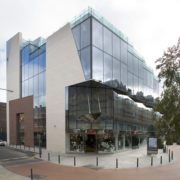While British retailer Tesco plans 10 or more new Irish stores in the next 18 months, its more up-market rival Marks & Spencer is set to open its sole new Irish store this year in Cork.
Having secured M&S, Douglas Village Shopping Centre owners the Shipton Group follow with a pet deal of their own – a 6,000 sq. ft. letting at the opposite end of the centre from M&S, to pet supply company Maxi Zoo.
Marks are due to open their 15,000 sq. ft (22,000 sq. ft. gross) store in late November – in plenty of time for Christmas. They say they will bring 100 new jobs to the revamped centre, where Tesco are main anchor, owning their own 90,000 sq. ft. of space over two levels.
This week, Tesco announced an 8% rise in sales, and said their current €115 million expansion of 11 supermarkets could bring 750 jobs. Planned new locations include Waterford’s Ballybeg; Newcastle, Galway; Swinford in Mayo; Naas, along with recent openings in Dublin, Wicklow and Westmeath.
Over 1,000 job applications and CVs were received for M&S’s 100 new Cork jobs alone, and all posts are now filled. The company has 700 British outlets and 300 others in up to 40 countries worldwide. M&S opened in Clonmel’s Showgrounds last year.
The Love family’s Shipton Group redeveloped the 1970s Douglas Village Shopping Centre in ‘08/09, more than doubling it in size to 250,000 sq. ft., as part of circa €90m investment to include Tesco’s own unit (their largest in Munster).
It has close to 50 shop units, and 1,000 multi-level car parking spaces. One of the latest arrivals is Welch Sports, after a quality re-fit of the old Lifestyle Sports store.
Joint agents DTZ Sherry FitzGerald and Bannon this week confirmed a Douglas centre deal with Maxi Zoo to open a circa 6,000 sq. ft. unit, their eighth store here and their first to open within a shopping centre.
There are two circa 10,000 sq. ft. units in the old Tesco footprint available, at a quoted rent of c€30 psf, suitable for ladies fashions, a Next etc.
Quoted from Sitewatch, Tommy Barker, Irish Examiner


 Ulster Bank’s monthly construction purchasing managers’ index (PMI)
Ulster Bank’s monthly construction purchasing managers’ index (PMI)


 The High Court has approved a survival scheme for one of Ireland’s best known brands, Elverys Sports which employs some 700 people full and part-time in 52 stores across the country. The scheme, supported by the National Assets Management Agency (Nama), will see Staunton Sports exit examinership on Friday.
The High Court has approved a survival scheme for one of Ireland’s best known brands, Elverys Sports which employs some 700 people full and part-time in 52 stores across the country. The scheme, supported by the National Assets Management Agency (Nama), will see Staunton Sports exit examinership on Friday.














 Bannon professional services team have been appointed to Coillte’s nationwide panel of Property Advisors.
Bannon professional services team have been appointed to Coillte’s nationwide panel of Property Advisors.












